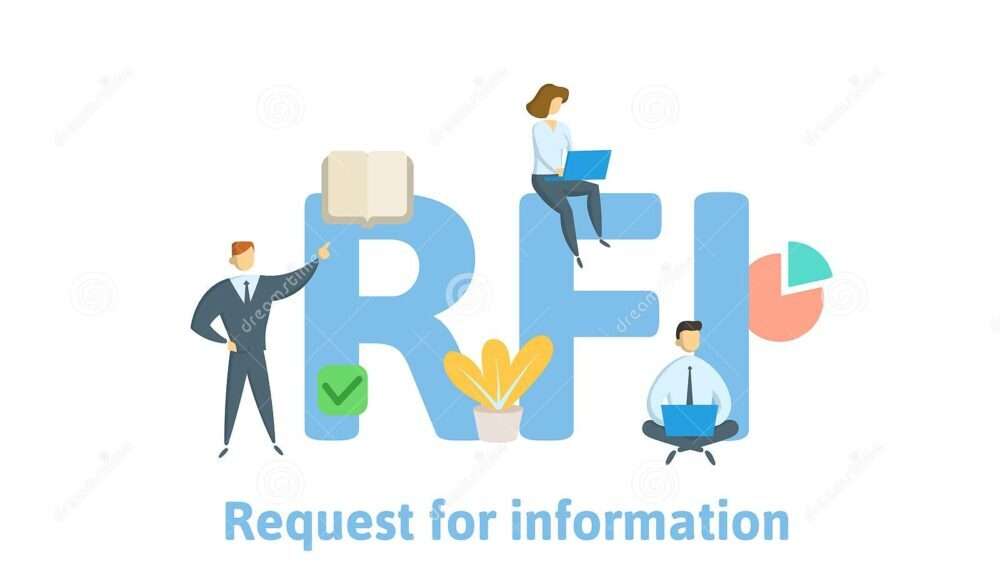A Request for Information (RFI) is a formal process of gathering information from potential suppliers of a good or service.
Information requests are intended to be written by customers and sent to potential suppliers.
The RFI is usually the first and broadest of a series of requests aimed at narrowing down the list of potential vendor candidates.
Requests for information (RFIs) can be useful in situations where an organization has little knowledge about potential vendors and wants to reduce the time and cost of evaluating vendors.
RFIs are often used in a variety of situations, for example, in major IT purchases.
The goal of using RFI is to gather information about the market in a formal and structured way.
The document should specify the requirements that the organization has while requesting specific answers about how the vendor will meet them.
To help identify differences between vendors, a good RFI will also focus on the unique requirements of the inquiring business and on concerns that are least likely to be addressed by each vendor.
Recipients are usually asked to submit their responses in a standardized format to facilitate comparisons.

Areas of use
RFI can be used in a number of scenarios such as information technology, advertising agencies,
and in the construction industries.
RFIs can also assist in the selection of enterprise resource planning (ERP) tools and electronic health records (EHRs).
In the IT sector, RFIs are commonly used to obtain software from vendors.
The software is usually used for a long period of time,
so it is important for the organization to choose the right vendor.
The RFI should define clear business requirements,
such as integrations with other software or hardware, use cases, or management options.
In construction, information requests may be sent by the contractor to the designer,
or from the contractor to the client.
or from a subcontractor to a customer, or from a subcontractor to a main contractor.
Typically, RFIs will be used in construction before and after bidding.
Here, the Request for Information (RFI) should make inquiries regarding materials,
specifications, design drawings, standards, or contract information.

How to write an RFI form
The manner in which a request for information is written depends on the industry for which it is being written.
However, the basic information request will be four or five pages long and will include the following sections:
- Overview
- Required information
- Response expectations
- Illustration
The overview section should be written to articulate the organization’s goals and objectives,
such as what is required for both short- and long-term goals.
Basic information should be included here, such as introductory information about the applicant’s organization.
At the end of this section, the seller must know who the organization is and that the document is a request for information.
The second section should cover the required information,
and this section should detail the information required from the seller,
including specifications such as delivery schedules and functional requirements.
This section should be specific to the introductory information required of the seller but should not go into detail.
By the end of this section, the seller should have sufficient details to provide a response.
The next section should define what is expected of the response and detail the evaluation criteria,
along with instructions on how and when to respond.
Both the RFI response and the RFI response can be transmitted electronically, for example, via email.
This section should include a format, such as a pre-made form, that the seller can use to answer any information requests.
This process will make it easier to compare other sellers’ answers later.
The clarification section should also be last and should indicate any last-minute details that have not been mentioned yet.
Request for Information (RFI)
This section can include explanations about information that is not being searched for.
While writing the RFI, the structure should be based on the sender’s needs.
One of the main goals of a request for information is the ability to quickly evaluate multiple vendors.
This must be kept in mind while drafting information requests and response forms.
This means that clear guidelines must be given for responses – and presented in a specific format or order.
In addition, the request for information should be written so that it is clear and easy for the seller to respond.
As such, once the RFI is written, the organization must ensure that it is clear and brief.

RFI Best Practices
Before writing an RFI, it’s a good idea to keep in mind a set of best practices to follow.
Even after the RFI has been written, these practices must be observed to ensure clarity.
Organizations must do the following:
- Limit the information request to the requested information only.
- Be specific about the information requested but avoid in-depth details.
- Follow any predefined formats in order to enable more direct comparisons.
- imit information requests to resource, capacity, and pricing information, for example, not information requested at this point.
- Give fair response times. It usually takes less time to respond to a request for information than to other forms, so a turnaround of 1-2 weeks is expected.
- Use RFIs to collect general information, organizations should steer clear of including more specific and in-depth information, and requests for information should not indicate an ultimate purchase intent.
- Include visuals in some information requests, such as those used in construction, to help the seller better understand the information requested.

RFI response
The RFI response is the response that the vendor will return to the organization after the initial information request.
Most likely, the seller will use a response management platform to respond to information requests.
In addition, management platform users will likely have a library of answers ready to be drawn from to provide faster and more accurate responses.
The entire response process may occur online and include uploading scanned documents via e-mails,
for example, and the response may also be sent through a hard copy.
For more architectural news




